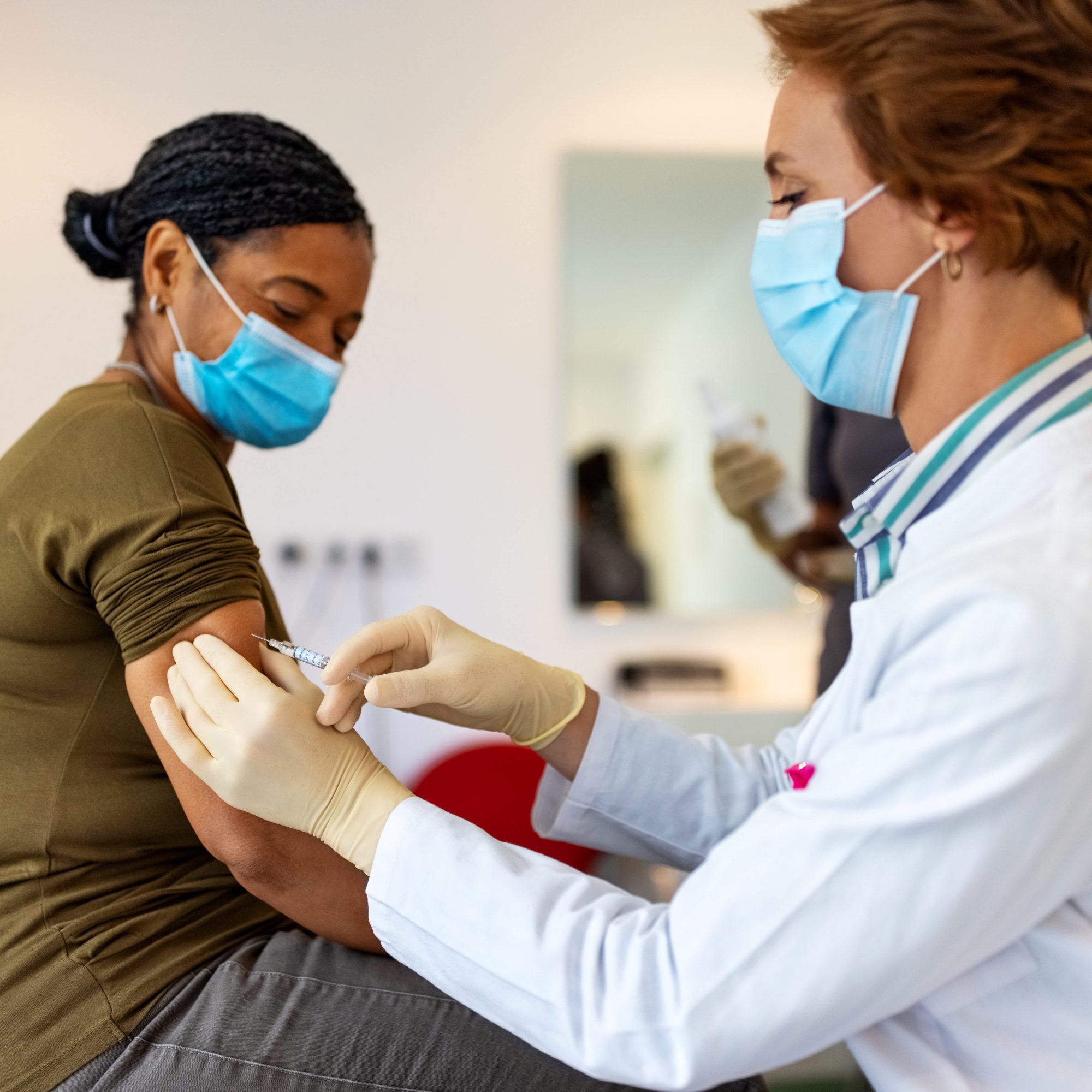
- POPSUGAR Australia
- Fitness
- I’ve Received Both Doses of the COVID-19 Vaccine — Here’s What It Was Really Like
I’ve Received Both Doses of the COVID-19 Vaccine — Here’s What It Was Really Like

It was an ordinary Wednesday afternoon. I had decided to drop into CVS during my lunch break and was mindlessly roaming the aisles for shampoo when I was approached by a nurse practitioner from the pharmacy’s Minute Clinic. “Would you be interested in receiving the COVID vaccine?” she asked me in an urgent but friendly voice. “We just had two healthcare workers miss their appointments.”
Confused and caught off guard, I responded, “I’m not a healthcare worker. I’m not even an essential worker.” The nurse practitioner explained that the vaccine has a limited shelf life, and if it wasn’t administered within a certain timeframe, it would be discarded anyway – so if I wanted to be vaccinated, I could receive my first dose that day at no cost.
The nurse practitioner explained that the vaccine has a limited shelf life, and if it wasn’t administered within a certain timeframe, it would be discarded anyway.
I could hardly believe my luck. I had been following the development of the vaccine closely, constantly in awe of the incredible scientists working to develop it and the tens of thousands of healthy patients bravely participating in its clinical trials. I knew I wanted to do my part by getting the vaccine when it became available to me, but at 24 years old, I figured it would be a long time before that actually happened. So, of course, I agreed to the nurse practitioner’s offer, and followed her to the Minute Clinic at the back of the store, where I received my first dose of the Pfizer-BioNTech COVID-19 vaccine.
The prick of the needle was practically painless, about the same as a yearly flu shot and far less painful, in my experience, than the HPV vaccine. However, almost immediately, both my arm and shoulder muscles became so sore I could’ve sworn I’d been punched by The Hulk. But a little ibuprofen went a long way, and the pain began to subside by the following afternoon, until it was completely gone 24 hours later. (If you’ve been scheduled to receive the vaccine, you’ll be advised not to take ibuprofen or acetaminophen beforehand, but afterwards it is perfectly safe to do so.)
Three weeks later, it was time for my second dose. Both the Pfizer and the Moderna vaccines have two doses, administered three and four weeks apart, respectively, while Johnson & Johnson’s forthcoming vaccine is expected to have a single dose. For the one that I received, the Pfizer vaccine, the efficacy is 52 percent after the first dose, then jumps to 95 percent after the second. That’s why for long-lasting immunity against the virus, it’s essential to receive both doses within the specified timeframe. Even then, it can take weeks before you fully develop immunity.
Several hours after the second dose, I had zero side effects and thought I was in the clear. But later that evening, the arm soreness that I had experienced after the first dose came back with a vengeance, and this time it was accompanied by a pounding headache, chills, and body aches. As much as I wanted to power through them, I ended up having to leave work early the next day. I experienced the second dose’s side effects on and off for a total of four days. (This is pretty standard – the CDC notes that side effects of the Pfizer vaccine typically resolve within a few days.)
The good news is that these side effects are a sign that the vaccine is working exactly the way it’s supposed to. There’s a common misconception that the vaccine can give you COVID-19, but it’s completely false; the CDC has confirmed that none of the vaccines currently being developed in the US contain the live virus that causes COVID-19. You may experience symptoms like mine as your body mounts an immune response. And of course, because it takes time to build immunity, you could become infected with COVID-19 if you’re exposed shortly before or after receiving the vaccine.
Despite having experienced the ‘negative’ side effects of the vaccine firsthand, I can’t help but think of how privileged I was to receive it.
I’ll admit there was a moment where I did panic over the side effects I was experiencing, especially being a person of colour and knowing that nearly 82 percent of the participants in the phase two and three clinical trials were white. That disparity is likely one reason that two out of 10 Americans still say they won’t get the vaccine, according to the Pew Research Center.
But my experience has made me even more of an advocate for getting the vaccine when you’re eligible. Dealing with headaches and chills for a few days pales in comparison to the recovery time for COVID-19, and it’s worth it to gain immunity from a virus that has already taken the lives of millions of people worldwide. Despite having experienced the “negative” side effects of the vaccine firsthand, I can’t help but think of how privileged I was to receive it, and I remain hopeful that this marks the beginning of the end of this pandemic.



